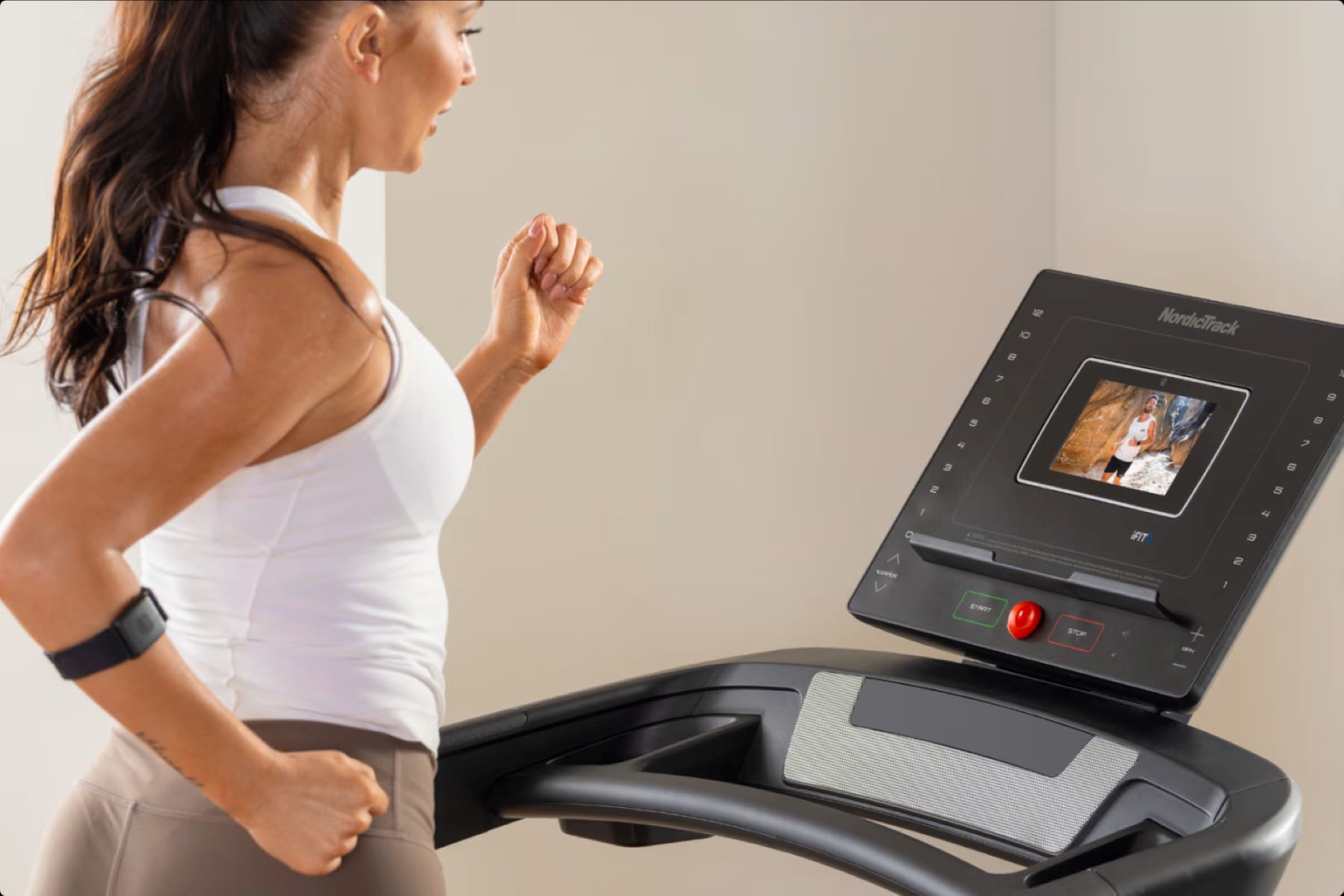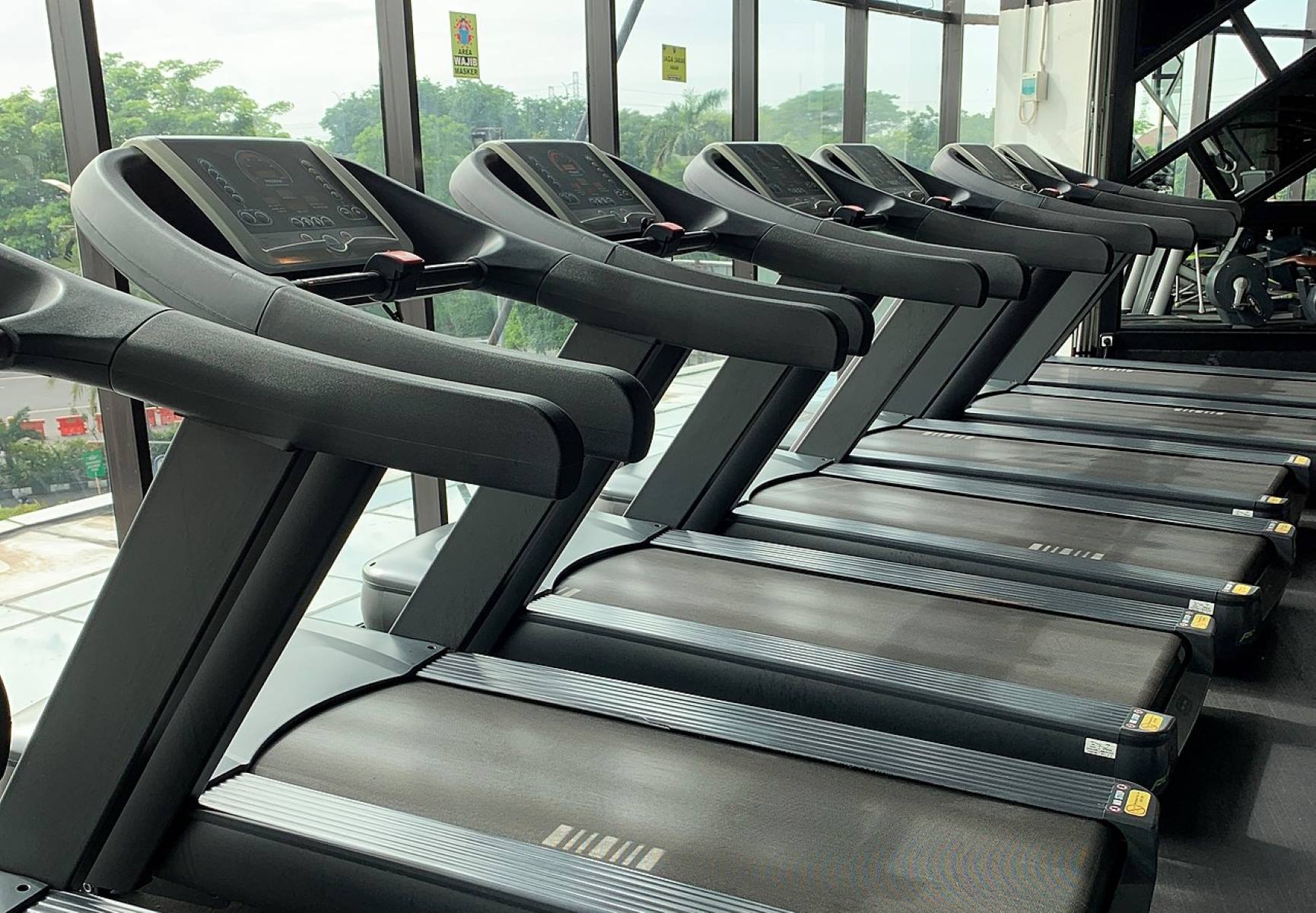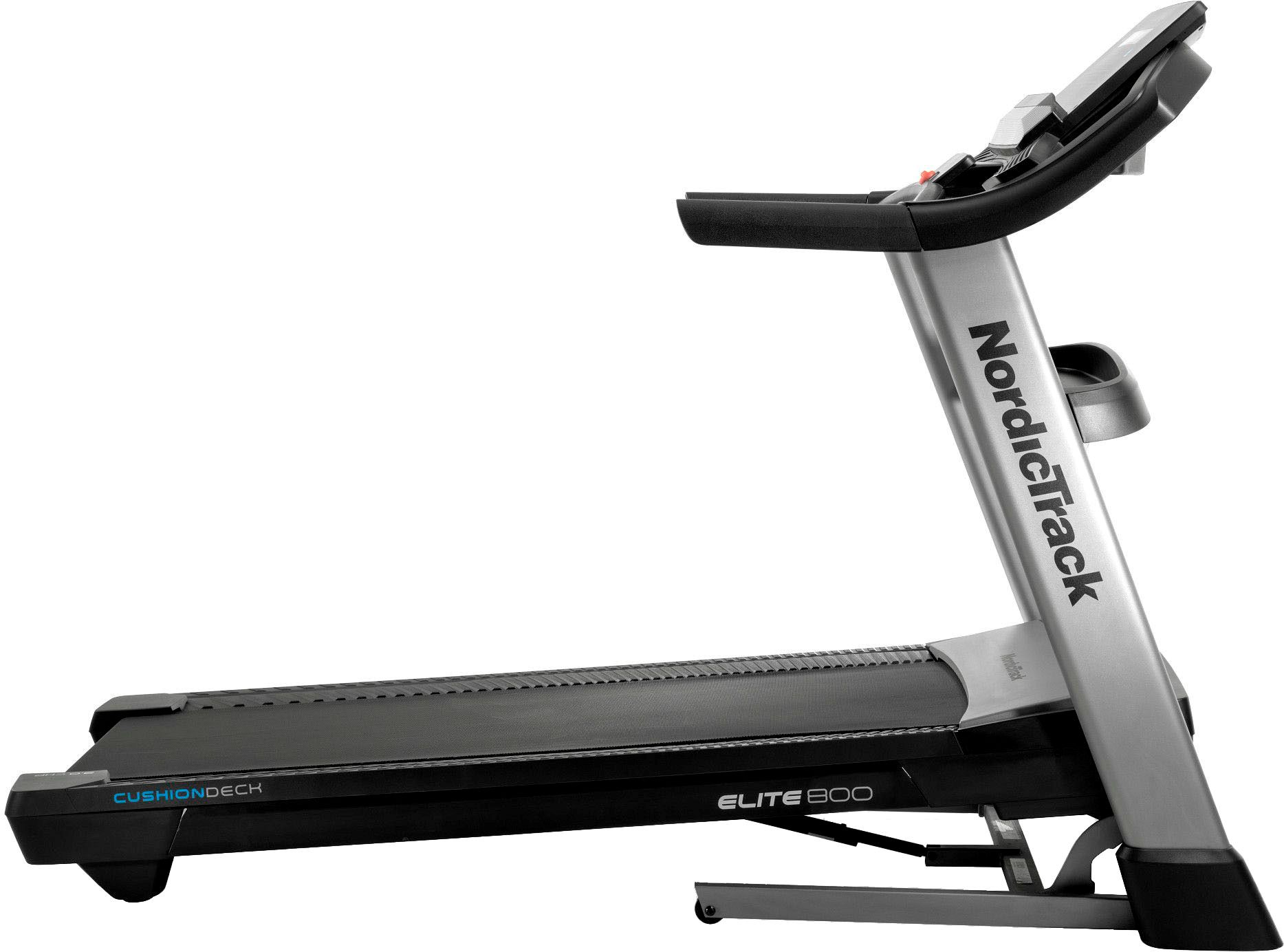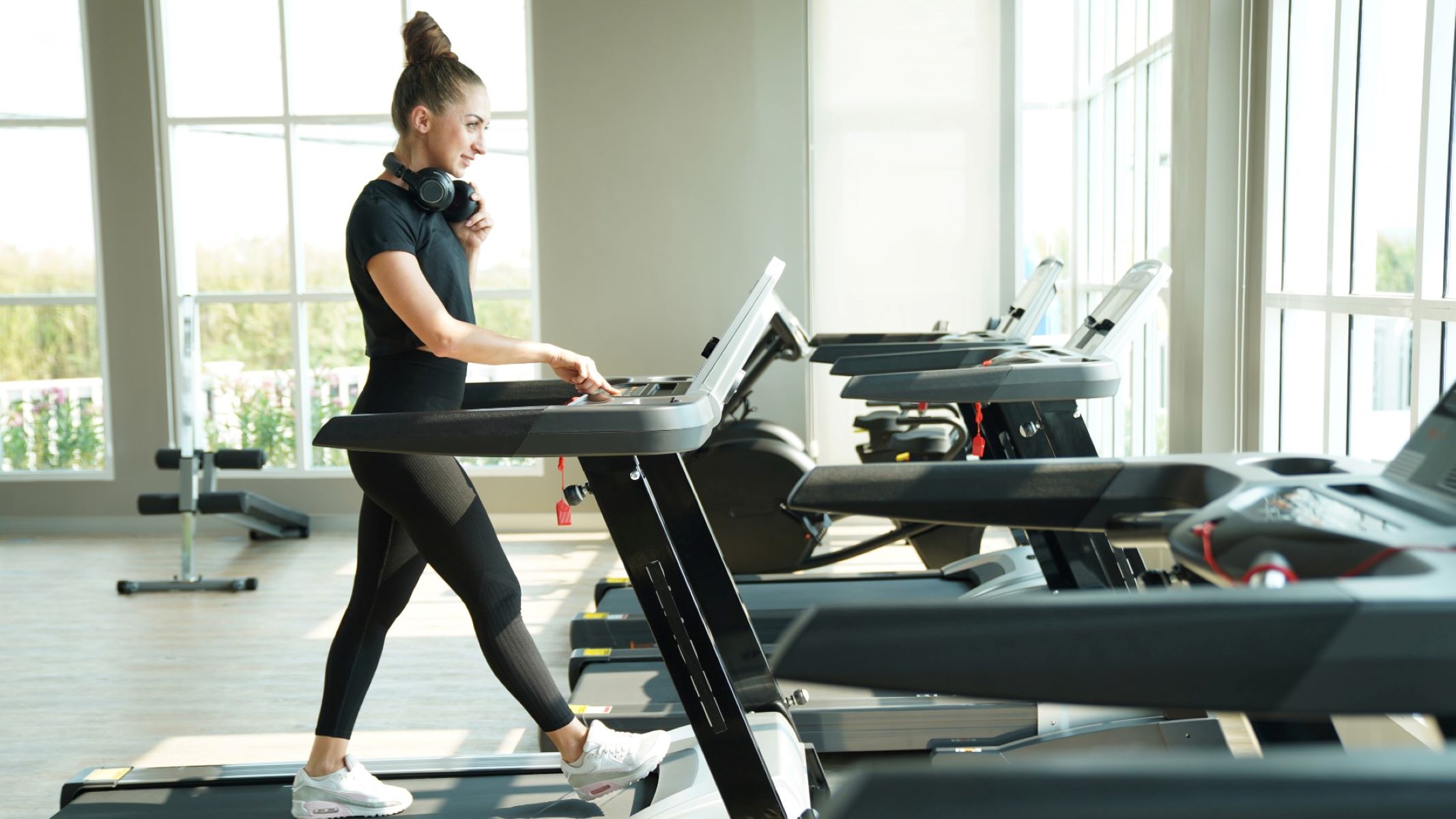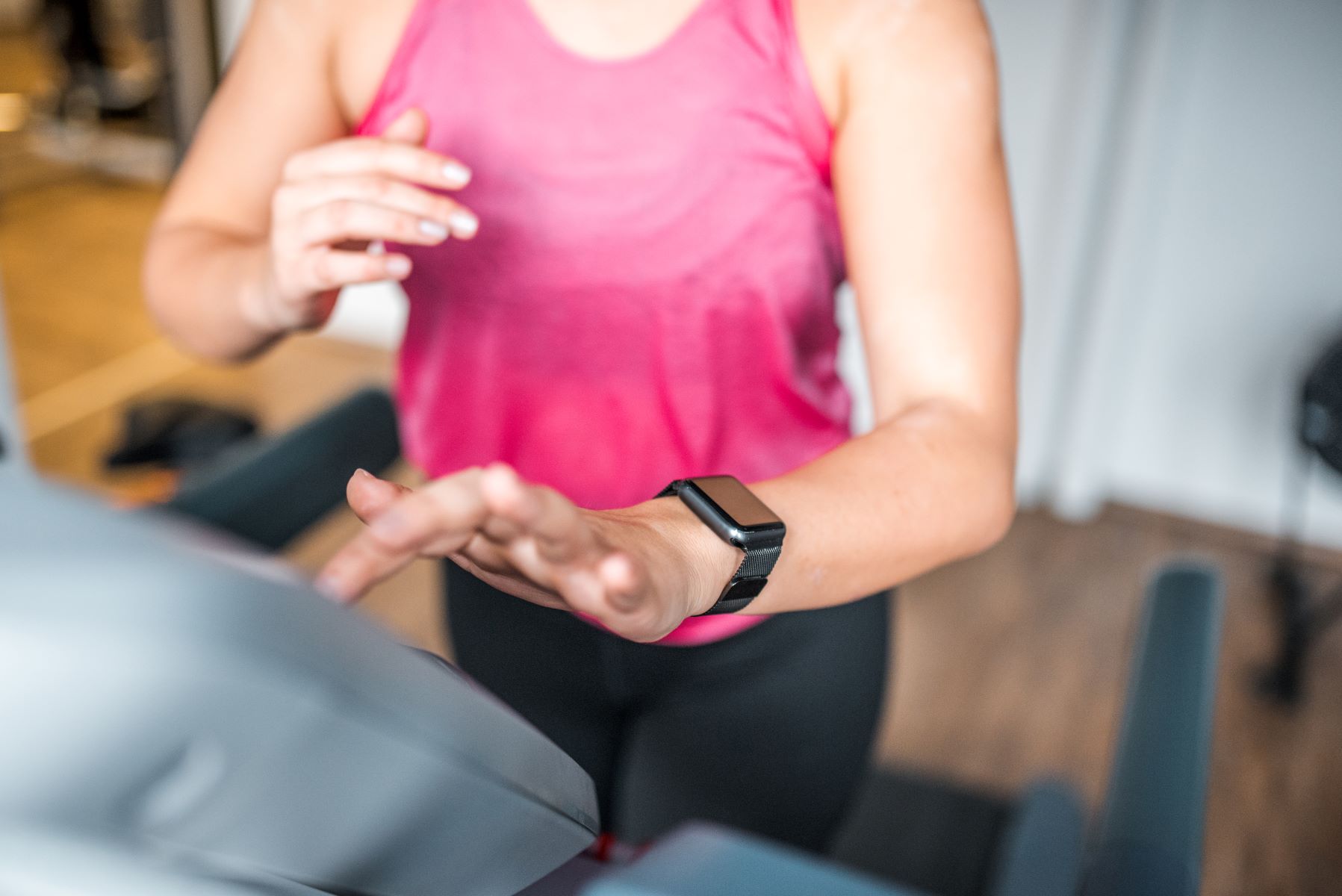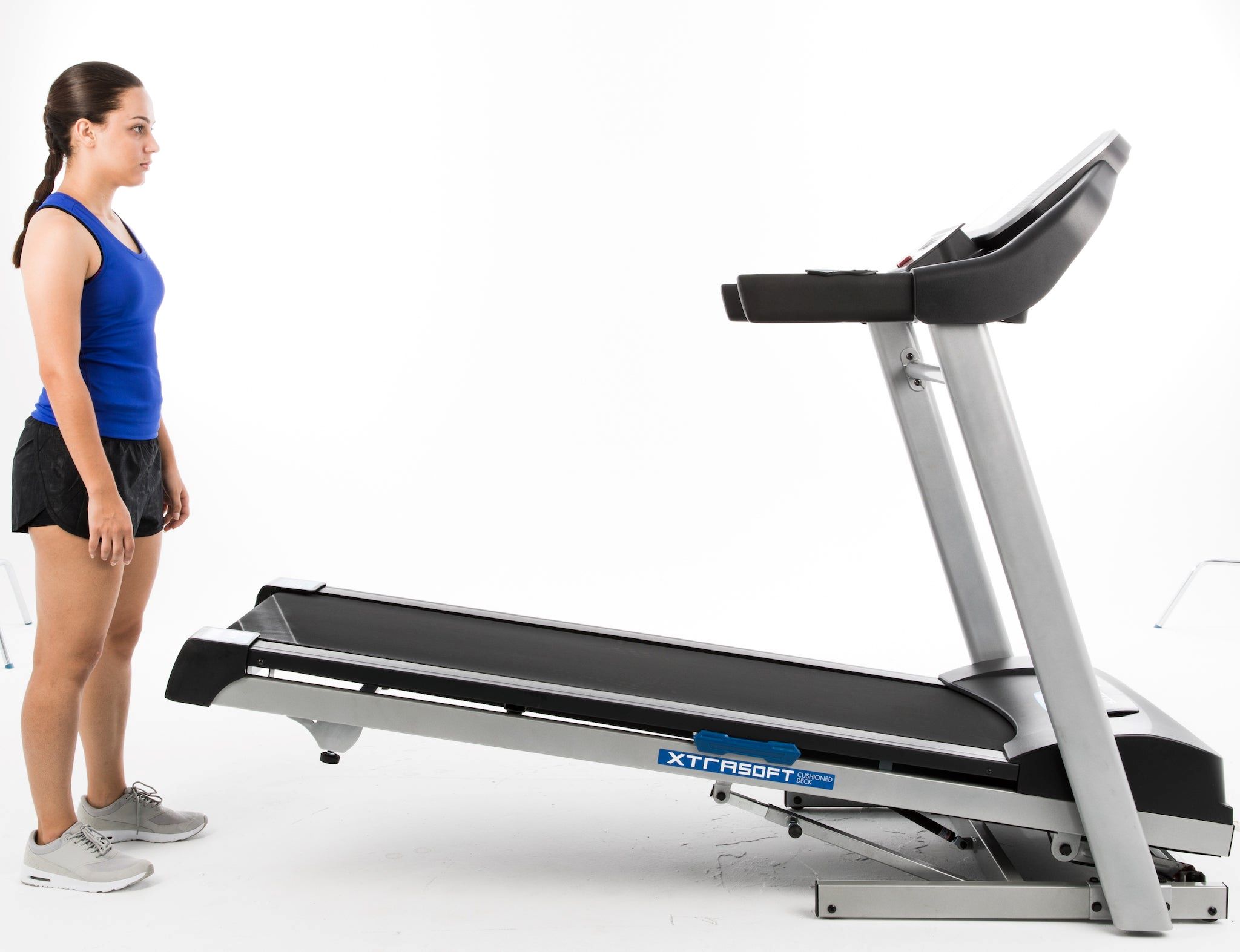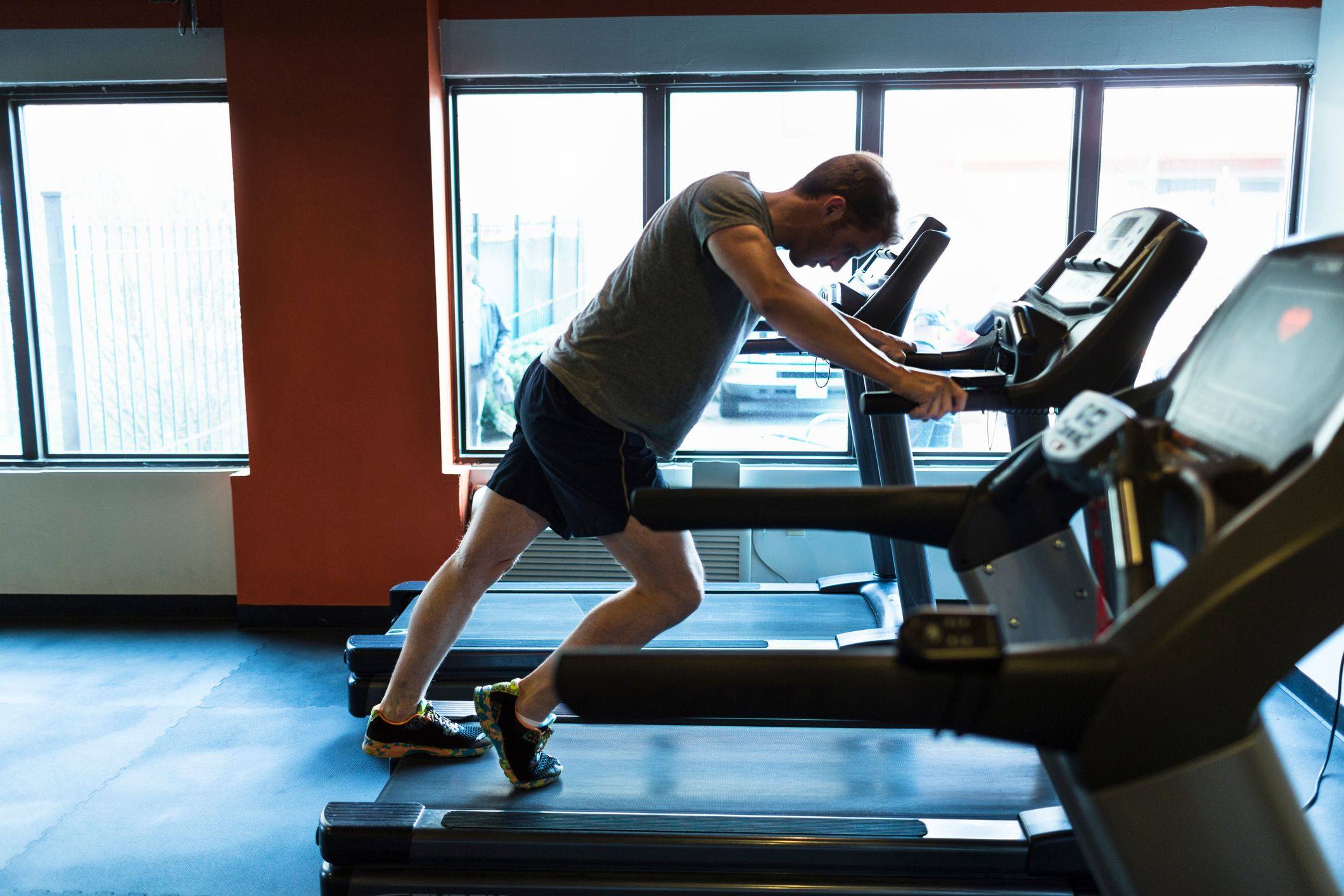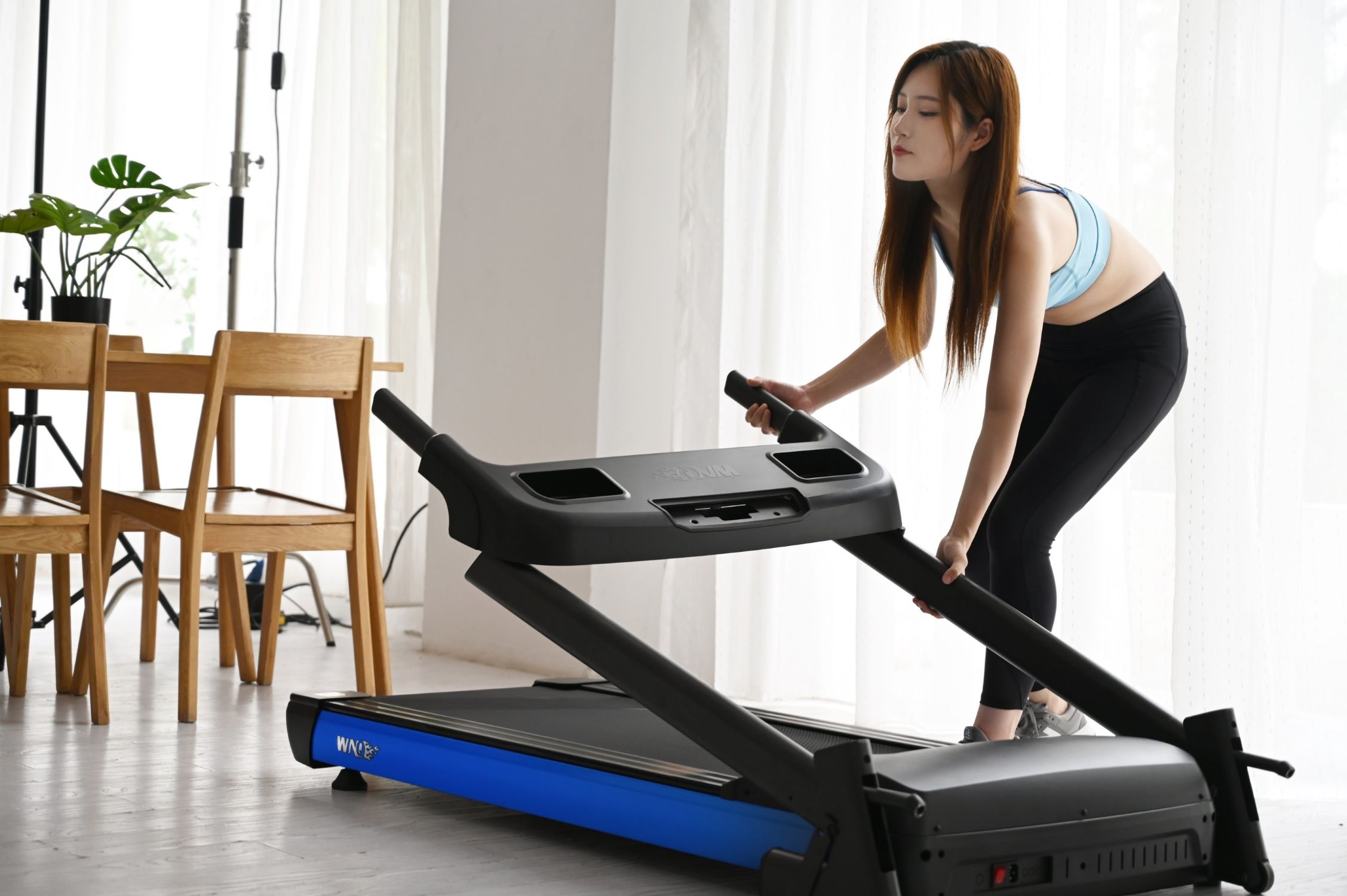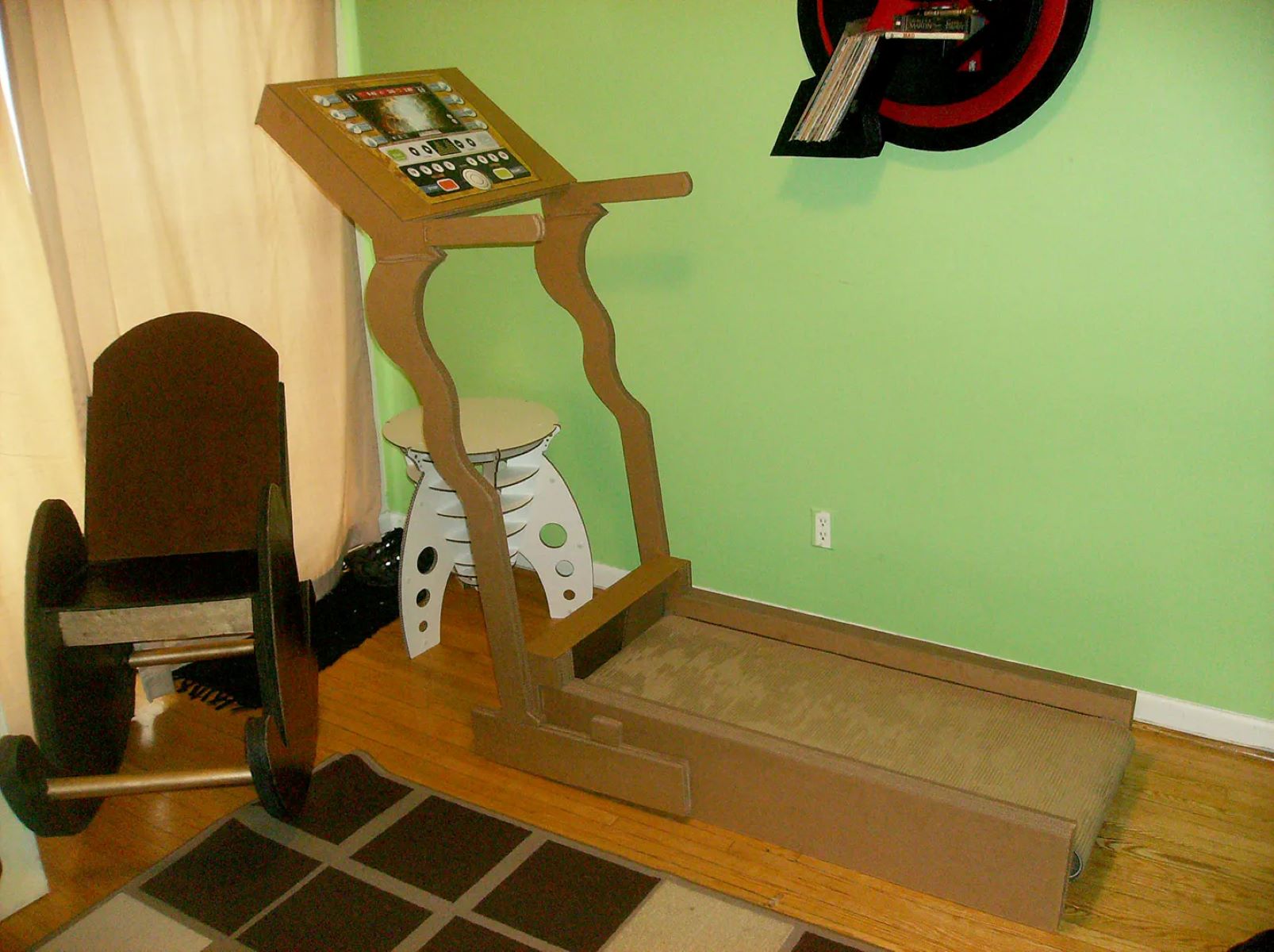

Featured
How To Make Your Own Treadmill
Modified: August 19, 2023
Discover how to create your own treadmill at home with our featured step-by-step guide. Get fit and stay healthy with this budget-friendly DIY solution!
Introduction
Welcome to the world of DIY fitness! If you’re tired of paying hefty gym fees or just want to add a personal touch to your workouts, why not build your own treadmill? Creating your own treadmill not only allows you to customize the features, but it’s also a rewarding project that can save you money in the long run.
Building a treadmill may seem like a daunting task, but with the right materials and tools, you’ll be able to create a fully-functional exercise machine right in the comfort of your own home. Whether you’re a seasoned DIYer or a beginner looking for a new challenge, this guide will walk you through the step-by-step process of constructing your own treadmill.
Before diving into the construction process, it’s important to gather all the necessary materials and tools. This will ensure that you have everything on hand when you begin building your treadmill. You’ll need items such as a sturdy frame, a motor, rollers, a belt, and various electrical components. Don’t worry if you’re not familiar with these materials; we’ll provide detailed instructions on where to find them and how to use them effectively.
Once you have all the required materials and tools, you can begin constructing the frame of your treadmill. This is the foundation of your machine and needs to be solid and stable. We’ll guide you through the process of building a durable frame that can withstand the constant movement and weight of running.
Materials and Tools Needed
Before you start building your treadmill, it’s essential to have all the necessary materials and tools on hand. Here’s a list of items you’ll need:
- A sturdy frame: This can be made from steel or wood, depending on your preference and availability.
- A motor: Look for a DC motor with sufficient power to handle the speed and intensity of your workouts.
- Rollers: These are used to support the belt and allow it to move smoothly. Look for durable and sturdy rollers that can handle continuous use.
- A belt: The belt is what you’ll be running on, so it needs to be thick, non-slip, and long enough to accommodate your stride.
- Electrical components: This includes wires, connectors, switches, and a control panel to regulate the speed and incline of the treadmill.
- Safety features: To ensure your safety, consider adding features like an emergency stop button, handrails, and a safety key.
- Tools: You’ll need various tools such as a drill, screws, wrenches, pliers, and a multimeter for electrical connections.
It’s important to note that the specific materials and tools needed may vary depending on the design and specifications of your treadmill. Make sure to double-check the instructions and plans you’re following to ensure you have everything required for your particular project.
Where can you find these materials? Many of them can be easily sourced from local hardware stores or online retailers. Additionally, you may be able to find used or recycled parts from secondhand shops or online marketplaces. This can help you save money while still obtaining quality materials.
Now that you have a clear understanding of the materials and tools needed, you’re ready to dive into the construction process. In the next section, we’ll guide you through building the frame of your treadmill, the first step towards creating your very own exercise machine.
Step 1: Building the Frame
The frame of your treadmill serves as the foundation and support for the entire machine. It needs to be sturdy and stable to withstand the constant movement and weight of running. Here’s how you can build the frame:
- Measure and cut the frame material: Start by measuring and cutting the steel or wood material according to the dimensions specified in your treadmill plans. Use a saw or a suitable cutting tool to ensure accurate and clean cuts.
- Assemble the base frame: Lay out the main pieces of your frame on a flat surface. Begin by connecting the vertical and horizontal pieces using screws or bolts. Make sure the joints are secure and tight to prevent any wobbling or instability.
- Attach the side supports: To enhance the stability of your treadmill, attach side supports to the vertical pieces of the base frame. Use screws or brackets to secure them firmly in place.
- Add crossbars for reinforcement: Depending on the design of your treadmill, you may need to add crossbars for additional strength. Measure and cut the crossbars to the appropriate length and attach them between the vertical pieces of the frame.
- Check for stability: Once you’ve assembled the frame, check for any wobbling or instability. Shake the frame gently to ensure it is solid and securely fastened. If needed, adjust and tighten any loose connections.
It’s important to follow the specific instructions provided by your chosen treadmill plans to ensure proper construction of the frame. Additionally, consider adding reinforcements or additional support if you plan on using the treadmill for intense workouts or if you’re on the heavier side.
Before moving on to the next step, take a moment to review and double-check the stability and sturdiness of your frame. Making sure the foundation is sound will ensure a safe and reliable treadmill for your workouts.
With the frame constructed, you’re now ready to move on to the next step: assembling the belt and rollers. This is a crucial part of your treadmill’s functionality, as it allows for smooth and consistent movement while walking or running. Keep reading to learn how to complete this step.
Step 2: Assembling the Belt and Rollers
Now that you have the frame of your treadmill in place, it’s time to focus on assembling the belt and rollers. This step is crucial to ensure smooth and consistent movement while walking or running on your treadmill. Follow these steps to assemble the belt and rollers:
- Prepare the belt: Lay the belt flat on a clean and even surface. Make sure it is free from any folds or wrinkles that could affect its performance. Measure and trim the belt to the desired length, leaving some extra length to ensure a proper fit.
- Attach the rollers: Position the rollers on the sides of the frame, ensuring they are aligned with the front and back of the frame. Use screws or bolts to secure the rollers in place. Make sure they are tightly fastened to prevent any movement or slippage during use.
- Adjust the tension: Once the belt is in place, you’ll need to adjust the tension to ensure proper performance. Consult your treadmill plans or manufacturer’s instructions for specific guidelines on tension adjustment. This may involve adjusting the position of the rollers or using tension adjustment screws.
- Test the movement: With the belt and rollers assembled and adjusted, give it a test run. Turn on the motor and set the speed to the lowest setting. Step onto the belt and walk slowly to determine if the movement is smooth and without any slipping or misalignment.
During the assembly process, it’s important to pay attention to the alignment of the belt and rollers. Ensure that the belt is centered on the rollers and doesn’t rub against the frame or any other components. Additionally, make sure the tension is adjusted properly to avoid excessive wear and tear on the belt.
If you encounter any issues during this step, review the instructions and double-check your assembly. It’s better to address any problems early on to prevent future complications. Once you’re confident that the belt and rollers are properly assembled, you can move on to the next step: installing the motor.
Step 3: Installing the Motor
The motor is the heart of your treadmill, providing the power necessary for the belt to move. Installing the motor correctly is crucial for the overall functionality of your homemade treadmill. Follow these steps to install the motor:
- Position the motor mount: Start by positioning the motor mount on the frame, ensuring it is aligned with the belt and rollers. The mount should be securely attached to the frame using screws or bolts.
- Place the motor: Carefully place the motor onto the motor mount, making sure it is positioned correctly and securely. Depending on the design of your treadmill, you may need to use brackets or straps to hold the motor in place.
- Attach the pulley or flywheel: If your motor requires it, attach the pulley or flywheel to the motor shaft. This component helps transfer power to the belt, enabling it to move with the motor’s rotation.
- Connect the motor to the rollers: Using a suitable belt or chain, connect the motor shaft to one of the front rollers. This will allow the motor’s rotation to drive the movement of the belt. Make sure the connection is tight and secure.
- Ensure proper alignment: Check the alignment of the belt, rollers, and motor. The belt should be centered on the rollers, without any twisting or misalignment. The motor should be positioned straight and parallel to the belt.
- Secure the motor wires: Use zip ties or cable clamps to secure the motor wires to the frame or motor mount. This prevents them from dangling or getting caught during operation.
- Double-check the connections: Before proceeding, double-check all the connections to ensure they are secure and properly tightened. Loose connections can cause issues with the motor’s performance and potentially lead to accidents.
It’s crucial to follow the manufacturer’s instructions or the specific guidelines provided by your treadmill plans when installing the motor. This will ensure that you have the motor properly aligned and connected, allowing for smooth and efficient operation of your DIY treadmill.
Once you’ve installed the motor, you can move on to the next step: wiring and electrical setup. This step is necessary to provide the necessary power and control for your treadmill. Stay tuned for the upcoming section.
Step 4: Wiring and Electrical Setup
Now that you have the motor installed, it’s time to focus on the wiring and electrical setup of your DIY treadmill. This step is essential for providing power to the motor and controlling the speed and other features of your treadmill. Follow these steps to complete the wiring and electrical setup:
- Plan the electrical layout: Before proceeding with the wiring, it’s important to plan the electrical layout of your treadmill. Determine the placement of the control panel, switches, and other components to ensure easy access and proper functionality.
- Connect the motor to the power source: Begin by connecting the motor to the power source. This typically involves connecting the wires from the motor to the power supply or control panel. Follow the wiring diagram provided by your treadmill plans or the manufacturer to ensure correct connections.
- Install the control panel: Mount the control panel in a convenient location on the frame. This is where you’ll be able to adjust settings such as speed, incline, and any preset workout programs. Connect the wires from the control panel to the motor and other components according to the wiring diagram.
- Wire the switches and safety features: If your treadmill includes additional switches or safety features such as an emergency stop button or safety key, wire them according to the provided instructions. These features are important for your safety and should be properly connected and tested.
- Avoid loose or exposed wires: During the wiring process, be sure to properly secure and insulate all wires to avoid any electrical hazards. Use zip ties or cable clamps to keep the wires organized and prevent them from hanging or interfering with the moving parts of the treadmill.
- Perform a thorough check: Once all the wiring is complete, double-check all the connections to ensure they are secure and properly insulated. Inspect the wiring for any signs of damage or exposed wires, and address any issues before powering on the treadmill.
It’s important to note that electrical work can be dangerous if not done properly, so if you’re not confident in your abilities, it’s best to seek the assistance of a professional or someone experienced in electrical work.
Now that you’ve successfully completed the wiring and electrical setup, you can proceed to the next step: adding safety features to your homemade treadmill. Safety should always be a top priority to protect yourself and others while using the treadmill. Read on to learn more.
Step 5: Adding Safety Features
Safety should always be a top priority when using any exercise equipment, and your DIY treadmill is no exception. Adding proper safety features to your treadmill will help ensure a secure and worry-free workout experience. Follow these steps to add essential safety features to your homemade treadmill:
- Emergency Stop Button: Install an emergency stop button within easy reach of the user. This button should immediately halt the movement of the belt and shut off the motor in case of an emergency or if you lose control.
- Safety Key: Consider adding a safety key system to your treadmill. This involves attaching a key to your clothing with a lanyard. If you lose your balance or fall, the key will detach from the treadmill, automatically stopping the belt movement.
- Handrails: Depending on your design and personal preference, you may choose to install handrails on either side of the treadmill. Handrails provide stability and support, especially during intense workouts or for those with mobility issues.
- Non-Slip Surface: Ensure that the surface of the belt is non-slip to prevent falls or slips while walking or running. You can use a textured surface or apply non-slip tape to the belt if needed.
- Proper Ventilation: Adequate ventilation is essential to prevent overheating of the motor and electrical components. Ensure proper airflow around the motor by leaving sufficient space around it and using cooling fans if required.
- Noise Reduction: If your treadmill produces a significant amount of noise, consider adding noise reduction materials or insulation to minimize disturbances to yourself and others in your household.
Even with these safety features in place, it’s crucial to use common sense and practice caution while using your treadmill. Always start with a warm-up, maintain proper form, and remember to stay hydrated during your workouts.
Once you have implemented these safety features, congratulations! You’ve created a safer treadmill for your workouts. Now it’s time to move on to the next step: adjusting the speed and incline of your DIY treadmill. Keep reading to learn more.
Step 6: Adjusting the Speed and Incline
One of the advantages of building your own treadmill is the ability to customize the speed and incline settings to fit your specific fitness goals and preferences. Adjusting the speed and incline allows you to vary the intensity of your workouts, making them more challenging and effective. Follow these steps to adjust the speed and incline of your DIY treadmill:
- Speed Adjustment: Most DIY treadmills have a speed control panel with buttons or a dial to adjust the speed. Consult your treadmill plans or manufacturer’s instructions to understand how to operate and adjust the speed settings. Gradually increase or decrease the speed to find your desired pace for walking or running.
- Incline Adjustment: If your treadmill is designed to have an adjustable incline, you’ll typically find buttons or a lever to control this feature. Increase the incline to simulate uphill running or decrease it for a flat surface. Adjusting the incline will add variety and challenge to your workouts.
- Preset Programs: Some DIY treadmills may come with preset workout programs that automatically adjust speed and incline settings. Explore the pre-programmed options to add variety to your workouts or create your own customized programs based on your fitness goals.
- Manual Adjustments: If your treadmill does not have automated speed and incline adjustments, consider incorporating manual adjustments into your workouts. Gradually increase the speed or adjust the incline manually after a certain duration to add intervals and intensity to your routine.
It’s important to listen to your body and progress gradually when adjusting the speed and incline of your treadmill. Be sure to warm up adequately and start at a comfortable pace before increasing the intensity of your workout.
Remember, safety comes first. Always use the safety features such as the emergency stop button or safety key while adjusting the speed and incline. If you have any concerns or questions regarding the operation of your treadmill, refer to the manufacturer’s instructions or seek professional assistance.
With your treadmill now fully functional, it’s time for the final step: testing and troubleshooting. This step will ensure that your DIY treadmill is performing optimally and ready for your workouts. Read on to learn more.
Step 7: Testing and Troubleshooting
Now that you’ve completed the construction and setup of your DIY treadmill, it’s important to thoroughly test its functionality and address any potential issues. Follow these steps to test and troubleshoot your homemade treadmill:
- Test the Motor: Turn on the motor and observe its performance. Ensure that it starts smoothly and runs quietly without any unusual noises or vibrations. Check if the motor speed can be adjusted smoothly using the control panel.
- Check Belt Alignment: Walk or run on the treadmill and observe the alignment of the belt. It should remain centered and straight, without any slipping or running off to one side. If you notice any misalignment, adjust the tension or consult your treadmill plans for guidance.
- Inspect Electrical Connections: Carefully examine all electrical connections, including wires and connectors, to ensure they are secure and properly insulated. Look for any signs of loose connections or exposed wires. Tighten or reattach any loose connections and insulate exposed areas with electrical tape.
- Verify Safety Features: Test the emergency stop button and the safety key system to ensure they function as intended. Activate the emergency stop button to confirm that it immediately halts the movement of the belt and turns off the motor. Test the safety key’s detachment by pulling it while walking on the treadmill.
- Check for Stability: While walking or running, pay attention to the stability of your treadmill. Ensure that the frame remains sturdy and there is no excessive wobbling or shaking. If stability issues arise, tighten any loose connections and reinforce weak areas of the frame.
- Seek Professional Help if Needed: If you encounter persistent issues or are unsure of how to troubleshoot certain problems, it’s always best to seek the assistance of a professional. They can provide expert guidance and ensure your treadmill is safe and properly functioning.
Regular maintenance is also crucial to keep your treadmill in top condition. Clean the belt and rollers regularly, lubricate moving parts as needed, and inspect the overall condition of the treadmill periodically. This will help extend the lifespan of your machine and ensure optimal performance for years to come.
Congratulations on completing your homemade treadmill! By following these steps and conducting thorough testing, you’ve created a customized exercise machine that suits your fitness needs. Enjoy your workouts and stay motivated for a healthier lifestyle!
Conclusion
Building your own treadmill is a rewarding and cost-effective way to bring the gym experience right into your home. By following the step-by-step instructions in this guide, you’ve learned how to construct a sturdy frame, assemble the belt and rollers, install the motor, wire the electrical components, add safety features, adjust the speed and incline, and test and troubleshoot your homemade treadmill.
Through this DIY project, you’ve not only saved money on expensive gym memberships but also gained the ability to customize your treadmill to suit your individual fitness goals and preferences. Whether you’re a beginner looking to start a fitness routine or an experienced athlete seeking a reliable workout machine, your homemade treadmill can provide a convenient and flexible solution.
Remember to always prioritize safety by ensuring the proper alignment of the belt, using safety features like emergency stop buttons and safety keys, and maintaining and inspecting your treadmill regularly. Safety should never be compromised, and it’s essential to follow safety guidelines to prevent accidents or injuries.
Now that your DIY treadmill is fully functional, you can enjoy the convenience of exercising whenever you want, without leaving the comfort of your home. With consistent use and dedication to your fitness journey, your homemade treadmill can help you achieve your health and wellness goals.
Keep challenging yourself, tracking your progress, and exploring different workouts to make the most out of your DIY treadmill. Feel free to modify and upgrade your treadmill as you gain more experience and knowledge in the field of fitness.
So, go ahead and start enjoying the benefits of your homemade treadmill. Take control of your workouts, sweat it out, and make strides towards a healthier and fitter lifestyle.

